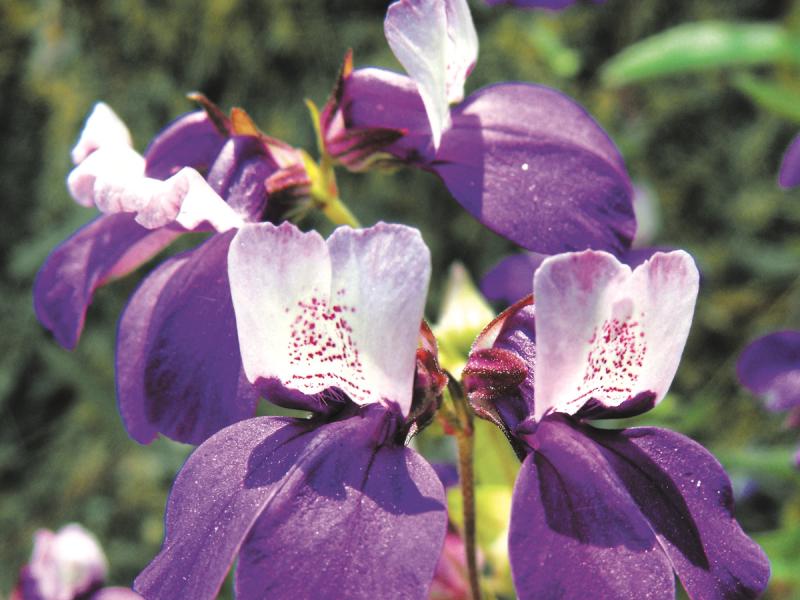Since nine is the greatest single-digit number, it is deemed powerful in numerology. There are nine muses and nine orders of angels. It is said, therefore, that the Forbidden City in Beijing only has 9,999 rooms, because 9,999 rooms is as close as earth can come to the 10,000 rooms in heaven.
The gentle upward curve at the corners of Asian roofs is not only soothing to the eye, but serves an everyday purpose. Because the sun is more directly overhead during summer, and lower on the horizon during winter, the curved corners let in more daylight during the winter, and shade the sun a bit more during the summer.
There is a native California wildflower named for its resemblance to some Chinese architecture. It is easily grown just about anywhere in the United States, and it blooms with stunning one- to two-inch bicolor purple-and-white flowers. They resemble snapdragons, but flowers are stacked atop one another on thin stems. The downward-facing petals are usually purple and the upward-facing petals are white, or sometimes a soft pink. They are very easy to grow from seed and do well in full sun or light shade.
Chinese House (Collinsia heterophylla) blooms with flowers rich in nectar that attract bees, ladybugs, hummingbirds and butterflies, especially some of North America's 27 species of Checkerspot butterfly.
For best results, sow Chinese House wildflowers directly into the garden as soon as the ground has warmed up in the spring, or in mild-winter areas, plant them in the fall. Choose a site with rich soil that contains lots of organic matter such as compost or leaf litter. Simply scatter the seeds on the top of the loosely prepared soil. Tamp the seeds in with a roller or by hand.
Do not cover them with dirt, because they need light to germinate. Once the seeds are planted, water them daily if you can, using a fine mist. Never get the soil too wet or soggy. The seeds will germinate in seven to 21 days.
They do well in a mixed garden or as a border because they will mature 12 to 24 inches tall, spreading 12 to 18 inches wide. They are sturdy enough to line walks and driveways, or grow along fences. You can add them to wildflower mixes or scatter them with baby's breath (Gypsophila paniculata) and cosmos (Cosmos bipinnatus), among others.
Like all annual wildflowers, Chinese House grows, blooms and goes to seed in one season. So it is no surprise that it grows quickly, with lots of blossoms right up until it is killed by the first hard frost. Chinese House is a self-seeder that scatters seeds for next year.
To save your own seeds, wait until the flowers die and form pods. Be sure to harvest them before they split open and disperse the seeds in the garden. You can pull up entire plants and hang them upside-down in a cool, dry, dark place such as a basement or garage.
Plant Chinese House seeds, and the bicolored blooms will soothe while hummingbirds come calling.
In bloom or not, the Chinese House will comfort you in what the Chinese called “Liu Yuan,” “the Lingering Garden.” And you can dream of the 10,000 rooms in heaven.





















































